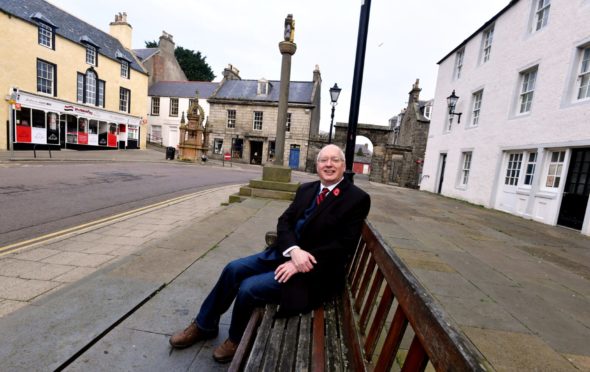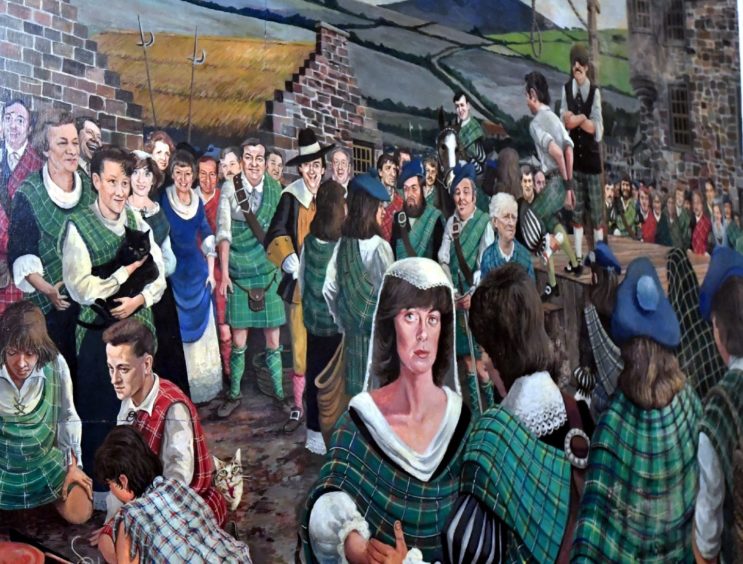Calls have been made for a north-east community to stage a commemoration for the “loveable rogue” who 320 years ago today was the last person to be publicly executed in the region.
On November 16, 1700, James Macpherson was hung from the clocktower at Banff with alleged foul play surrounding events that led him to the gallows.
His downfall was engineered by his sworn enemy, Lord Duff of Braco, who was incensed by the antics of the outlaw’s band of lawless freebooters operating in Aberdeen, Banff and Moray.
Macpherson was captured but escaped on two occasions, once in Inverness and on another occasion in Aberdeen, but was finally seized in an operation executed by Lord Braco in the autumn of 1700 at the St Rufus Fair in Keith.
The skilled swordsman was tried in Banff by Sheriff Nicholas Dunbar, a friend of Lord Braco, and was condemned to hang for the crimes of purse cutting, theft – and of being an Egyptian or gypsy.
Macpherson was ordered to be “to be hanged by the neck betwixt the hours of two and three”.
It’s at this point that the story begins to stand out, though, for it’s said that Lord Braco, on hearing that a lone rider was approaching from Turriff with a reprieve, had the town clock turned forward by 15 minutes to ensure the execution went ahead.
MacPherson didn’t go quietly and varying accounts of his final minutes all suggest he performed a tune on his fiddle before smashing it to pieces when the crowd failed to take him up on his offer of playing it again at his wake.
Reminders of that now-legendary day can still be found in the town today, including the Broken Fiddle cafe on Strait Path and a painting paying tribute to him in Banff Museum.
Town councillor Glen Reynolds believes that is not enough, though, and says plans should be made to properly commemorate the town’s infamous som.
“A number of constituents contacted me about commemorating the last public execution in Banff of the loveable rogue, Jamie or James Macpherson, on the 16th November 1700, and I am keen that we look at ways of formalising this historic event, once we are able to do so safely,” he said.
“Nobody who sits at the Mercat Cross in Low Street or visits the Broken Fiddle cafe on Strait Path in Banff can fail to be struck by the sense of history and tragedy as they look up at the recently restored Tolbooth Hotel.
“They must wonder at those who on that day looked down from there, when it was a prison, at the scene below them – the jostling, shouting and fighting crowd of supporters and opponents, surrounding the gallows and witnessing the untimely end of the 25-year-old loveable rogue, awaiting a potential pardon that never came and mocking the process by smashing his fiddle.
“It is the stuff that films are made of.”
And though the tale is yet to make it onto a big screen, the remnants of the smashed fiddle are on display at the Clan Macpherson Museum in Newtonmore and the tune said to have been played ahead of the execution is widely known as Macpherson’s Rant or Macpherson’s Lament.
Robert Burns later used it as the basis Macpherson’s Farewell.
Those involved in moving the clock forward were punished, and for many years afterwards the clock was kept fifteen minutes fast, as a reminder of Macpherson’s killing.
Some time after 1839, the faces of the clocktower were removed from Banff and rehoused in the newly-built Dufftown tower. It is now known as “the clock that hung Macpherson”.
“We live with the myths and legends, the places and tales as we romanticise his legend to this day,” Mr Reynolds added. “His apparent charisma and charm, his undoubted adversity in the face of death and of course, his abilities with the sword as well as the fiddle.
“In the aftermath, I like to think that there was something that happened that day which brought about the fact that its like was never seen again in Banff.
“A legend was born and Robert Burns was instrumental in developing the ‘cult of Macpherson’ with his rewrite of the famous rant that Macpherson composed prior to his demise. I like to think that his swagger can still be seen in Banff today, and will endure.”

